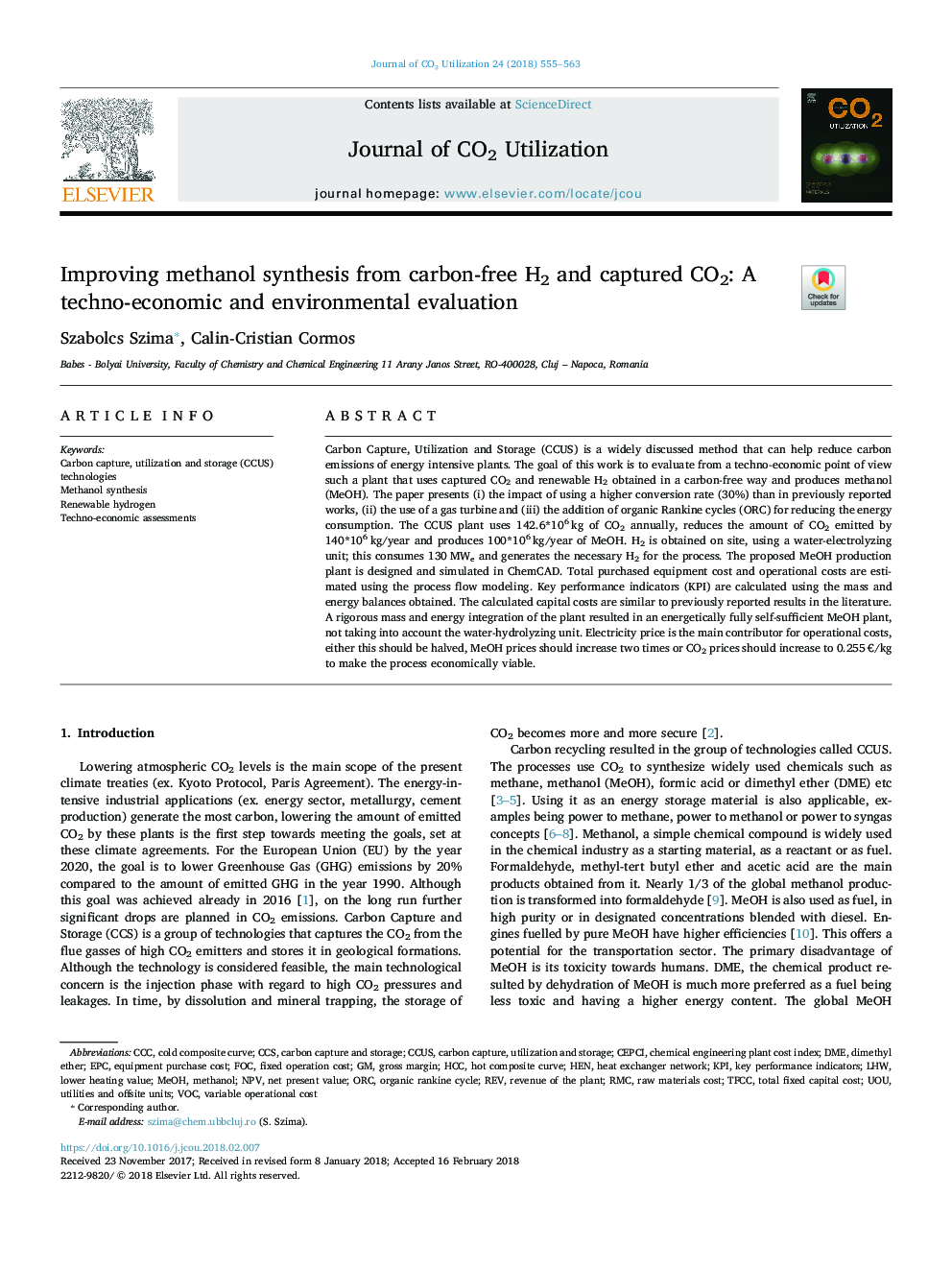| Article ID | Journal | Published Year | Pages | File Type |
|---|---|---|---|---|
| 6528915 | Journal of CO2 Utilization | 2018 | 9 Pages |
Abstract
Carbon Capture, Utilization and Storage (CCUS) is a widely discussed method that can help reduce carbon emissions of energy intensive plants. The goal of this work is to evaluate from a techno-economic point of view such a plant that uses captured CO2 and renewable H2 obtained in a carbon-free way and produces methanol (MeOH). The paper presents (i) the impact of using a higher conversion rate (30%) than in previously reported works, (ii) the use of a gas turbine and (iii) the addition of organic Rankine cycles (ORC) for reducing the energy consumption. The CCUS plant uses 142.6*106â¯kg of CO2 annually, reduces the amount of CO2 emitted by 140*106â¯kg/year and produces 100*106â¯kg/year of MeOH. H2 is obtained on site, using a water-electrolyzing unit; this consumes 130â¯MWe and generates the necessary H2 for the process. The proposed MeOH production plant is designed and simulated in ChemCAD. Total purchased equipment cost and operational costs are estimated using the process flow modeling. Key performance indicators (KPI) are calculated using the mass and energy balances obtained. The calculated capital costs are similar to previously reported results in the literature. A rigorous mass and energy integration of the plant resulted in an energetically fully self-sufficient MeOH plant, not taking into account the water-hydrolyzing unit. Electricity price is the main contributor for operational costs, either this should be halved, MeOH prices should increase two times or CO2 prices should increase to 0.255â¯â¬/kg to make the process economically viable.
Keywords
CCUSHENCCCKPIVOCRMCDMEORCREVLHWTechno-economic assessmentsEPCNPVCCSTFCCCEPCIHCCFOClower heating valuenet present valueCarbon capture and storageGross marginDimethyl etherMethanol synthesisKey performance indicatorsChemical Engineering Plant Cost IndexHeat exchanger networkMethanolMeOHRenewable hydrogenOrganic Rankine cycle
Related Topics
Physical Sciences and Engineering
Chemical Engineering
Catalysis
Authors
Szabolcs Szima, Calin-Cristian Cormos,
